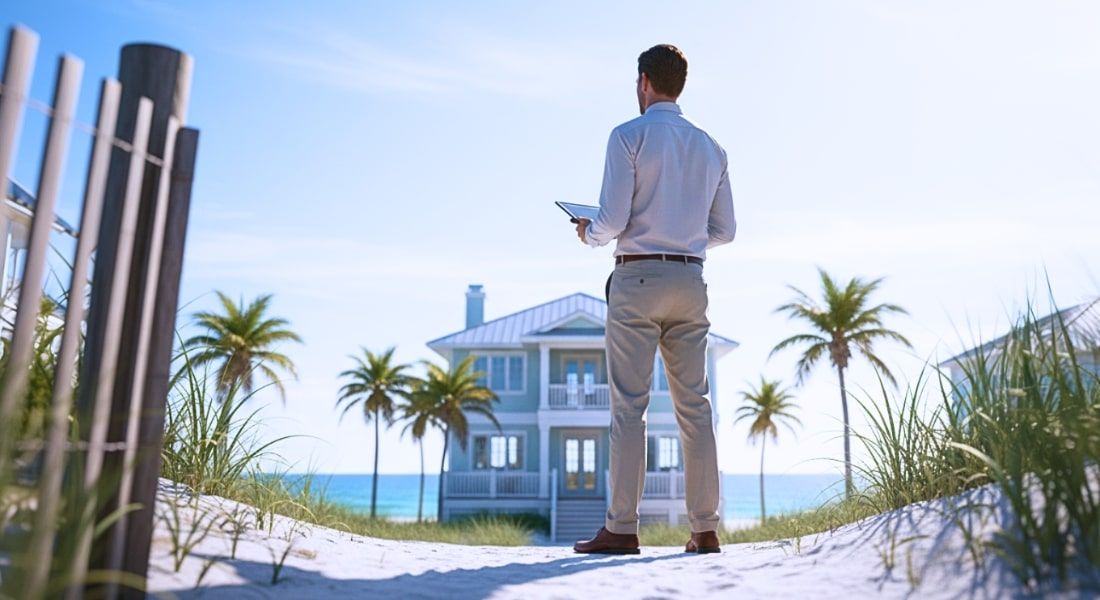
Selling a home on Anna Maria Island is exciting, but it also means making decisions that can come with pressure. Many sellers expect the island’s strong demand to carry the listing on its own. Then the stress hits when showings are quiet or offers don’t meet expectations. It is a good reminder that even in a desirable market like ours, pricing still drives results.
If you set the price too high, buyers will pass your home by, confident they can find a better value down the street. Set the price too low, and you risk missing out on the return your property has earned over time. Let’s find that number and set your home up for success in today’s Anna Maria Island market.
Anna Maria Island Real Estate Market Watch
Average home sale prices in Bradenton Beach dropped 70.8 percent year over year as of September 2025. However, AMI real estate trends are constantly changing. Contact Billi Gartman for help buying or selling a home on Anna Maria Island.
How Location and Rental Potential Shape Your Price
Pricing a home on Anna Maria Island goes beyond broad averages. Your price hinges on two things: the location and its rental potential.
Micro-Market Location
Values shift block by block here. Never rely on a generic “regional average.”
- Comparing Three Cities: Quiet streets in Anna Maria tend to draw full-time residents. Vacation-friendly pockets in Holmes Beach and Bradenton Beach often appeal to investors willing to pay a premium.
- Waterfront Properties: Gulf-front estates, canal-front homes, and near-beach properties all follow their own pricing paths.
- Walkability: Homes near Pine Avenue or Historic Bridge Street see stronger demand and higher rental interest.
Proven Rental Potential
Many buyers want a home that doubles as a lifestyle property and an income asset. If your home has a strong rental track record, that matters. Solid occupancy and revenue history can support a higher price.
Online estimates rarely capture this nuance. Verified rental performance gives your home an edge and adds confidence for investors.
The Core Value Drivers
A strong comparative market analysis (CMA) focuses on the features that truly move your price:
- Condition and Finish: Homes that feel new and turnkey sell for more. Modern kitchens, energy-efficient upgrades, and coastal-style finishes can add significant value.
- Flood Zone and Elevation: Higher elevation and favorable flood zones reduce insurance risk, build buyer confidence, and support stronger pricing.
- Key Amenities: On AMI, lifestyle features matter. A pool, dock, or boat lift, and a great outdoor space drive rental performance and buyer demand.
- Time on Market: Days on market send a signal. Homes priced right from day one attract attention and strong offers. Listings that linger often face price cuts and doubt.
Pricing Strategies That Work
Your best offers usually come early. The goal is to attract qualified buyers in the first two weeks, when interest and urgency are highest.
Use Psychological Pricing Wisely
Data guides your price, but perception matters too. Pricing just under a key search bracket makes a difference. For example, pricing at $1,999,000 instead of $2,050,000 expands your search reach and boosts perceived value.
Avoid “Testing the Market”
Starting high is the biggest pricing mistake. It slows momentum, leads to fewer showings, and often results in a price cut. A competitive price from day one protects your final sale price and keeps your listing feeling fresh.
Selective Under-Pricing
In fast-moving segments, we may price slightly below the most recent comparable sale. This strategy builds urgency, brings in multiple offers quickly, and can push your final price above the list price.
Presentation to Support Your Price
A premium price requires a premium presentation. Buyers should feel the value at first glance.
- High-quality photos and drone footage capture views, natural light, and the coastal lifestyle buyers want.
- Thoughtful staging helps buyers picture themselves in the home. Clean, welcoming spaces reinforce a higher price point.
- Showcase rare features, like large lots or grandfathered rental status, to justify your price.
FAQs About Selling a Home on Anna Maria Island
Here are quick answers to help you get ready before selling a home on Anna Maria Island.
What’s the average time to sell on AMI?
Timing varies by season and location, but well-priced homes often sell within a few weeks during peak months.
Do rental-friendly homes sell faster?
Often, yes. Many buyers want a home that works for personal use and income.
Should I upgrade before listing?
Minor updates like paint or lighting help. Major renovations depend on condition and competition. Sometimes, smart pricing is the better move.
When is the best time to list?
Winter and spring see the most activity, yet motivated buyers shop year-round. A well-priced home can sell in any season.
Can I sell while still renting the property?
Yes. Keeping bookings active can even benefit you, since investors like seeing proven rental demand.
Selling Your Home on AMI
Selling a home on Anna Maria Island takes more than guesswork. It takes experience, data, and insight into what buyers want most.
Contact Anna Maria Life Team to start positioning your home today. Our team understands the Anna Maria Island market and knows how to help sellers achieve the best results with confidence.



